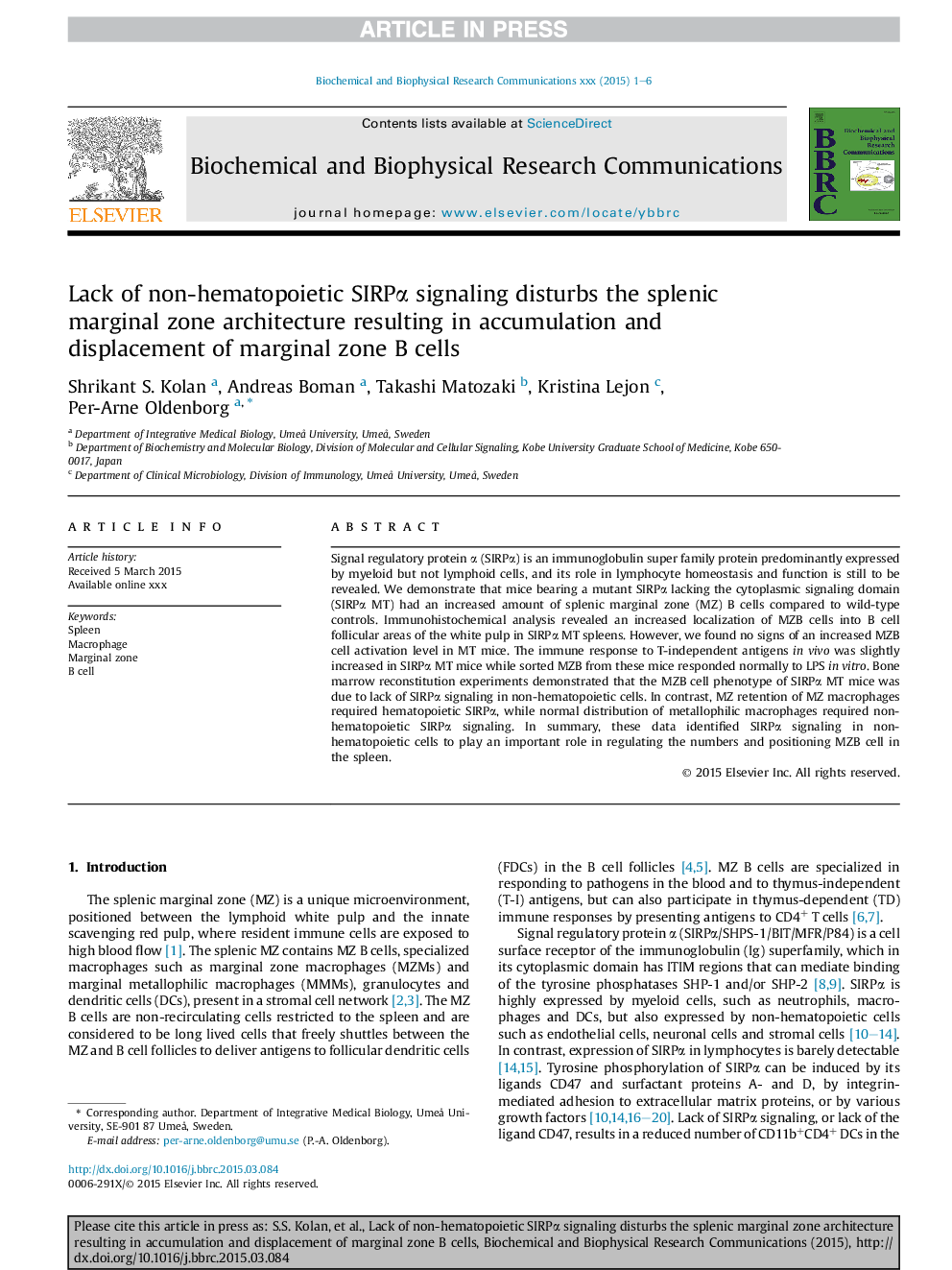| Article ID | Journal | Published Year | Pages | File Type |
|---|---|---|---|---|
| 10752037 | Biochemical and Biophysical Research Communications | 2015 | 6 Pages |
Abstract
Signal regulatory protein α (SIRPα) is an immunoglobulin super family protein predominantly expressed by myeloid but not lymphoid cells, and its role in lymphocyte homeostasis and function is still to be revealed. We demonstrate that mice bearing a mutant SIRPα lacking the cytoplasmic signaling domain (SIRPα MT) had an increased amount of splenic marginal zone (MZ) B cells compared to wild-type controls. Immunohistochemical analysis revealed an increased localization of MZB cells into B cell follicular areas of the white pulp in SIRPα MT spleens. However, we found no signs of an increased MZB cell activation level in MT mice. The immune response to T-independent antigens in vivo was slightly increased in SIRPα MT mice while sorted MZB from these mice responded normally to LPS in vitro. Bone marrow reconstitution experiments demonstrated that the MZB cell phenotype of SIRPα MT mice was due to lack of SIRPα signaling in non-hematopoietic cells. In contrast, MZ retention of MZ macrophages required hematopoietic SIRPα, while normal distribution of metallophilic macrophages required non-hematopoietic SIRPα signaling. In summary, these data identified SIRPα signaling in non-hematopoietic cells to play an important role in regulating the numbers and positioning MZB cell in the spleen.
Keywords
Related Topics
Life Sciences
Biochemistry, Genetics and Molecular Biology
Biochemistry
Authors
Shrikant S. Kolan, Andreas Boman, Takashi Matozaki, Kristina Lejon, Per-Arne Oldenborg,
